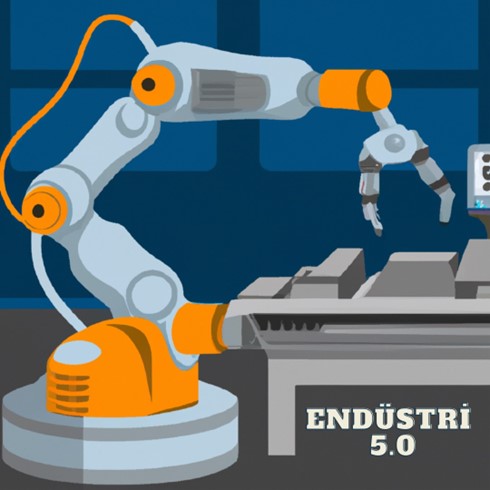Industry 5.0 is a smarter and more efficient way of manufacturing that increases the collaboration of humans and machines. This new production model involves the use of technologies such as artificial intelligence (AI), machine learning (ML) and cyber physical systems (CPS).
Industrial sensors are a key component of Industry 5.0. Sensors support the decision-making process of machines and systems by collecting data from their environment. Industrial sensors can measure temperature, pressure, humidity, flow, speed, position and more.
In Industry 5.0, industrial sensors are used in many different applications, including
- Automated production: Sensors are used to guide robots and other automated machines. For example, sensors can be used to guide a robot to hold a part or a machine to complete a process.
- Machine maintenance: Sensors are used to monitor the performance of machines and prevent breakdowns. For example, a sensor can monitor the temperature or vibration of a machine to determine the likelihood of failure.
- Quality control: Sensors are used to monitor the quality of products. For example, a sensor can provide quality control by measuring the size or weight of a product.
- Energy efficiency: Sensors are used to monitor energy use and improve efficiency. For example, a sensor can save energy by monitoring the energy consumption of a machine.
Industrial sensors are critical to the successful implementation of Industry 5.0. Sensors enable machines and systems to be smarter and more efficient, helping businesses to reduce costs, increase productivity and improve competitiveness.
Types of Industrial Sensors
Industrial sensors are available in several types, including
- Proximity sensors: Used to detect the presence or absence of objects.
- Mechanical sensors: Used to measure mechanical movement.
- Thermal sensors: Used to measure temperature.
- Pressure sensors: Used to measure pressure.
- Humidity sensors: Used to measure humidity.
- Flow sensors: Used to measure the flow rate.
- Speed sensors: Used to measure speed.
- Position sensors: Used to measure position.
The choice of industrial sensors varies depending on the requirements of the application. For example, a sensor for guiding a robot should be a sensor with high accuracy and repeatability. A sensor for monitoring the performance of a machine should be durable and reliable.
The Future of Industrial Sensors
Industrial sensors will become even more important with the development of Industry 5.0. Sensors will be used to develop smarter and more efficient machines and systems.
In the future, industrial sensors will be used in new applications, including
- Artificial intelligence: Sensors will be used to feed machine learning and artificial intelligence algorithms. This will allow machines to better understand their environment and make smarter decisions.
- Robotics: Sensors will allow robots to better understand the world around them and make more precise movements. This will allow robots to perform more complex tasks.
- Virtual reality and augmented reality: Sensors will be used to make virtual reality and augmented reality environments more realistic. This will allow workers to perform tasks such as training and maintenance more efficiently.
Industrial sensors are critical to the successful implementation of Industry 5.0. Sensors enable machines and systems to be smarter and more efficient, helping businesses to reduce costs, increase productivity and improve competitiveness.

